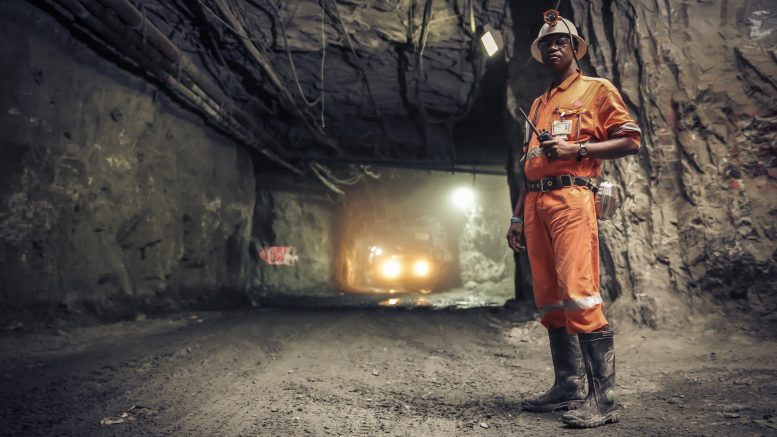The months-long showdown between Barrick Gold’s 63.9%-owned subsidiary Acacia Mining and the Tanzanian government heated up in the last days of July, with Acacia reporting that one of its senior international executives was prevented from leaving the country on July 28, with his passport seized and detention at Dar es Salaam airport. After what Acacia calls “legal intervention,” he was later released and his passport returned.
Acacia said the incident “follows increased levels of pressure from government agencies on Acacia employees” and the company vowed to “support our people.”
London-listed Acacia, formerly named African Barrick Gold, is the biggest gold miner in Tanzania, with three substantial operations: Bulyanhulu, Buzwagi and North Mara. It also has exploration projects in Tanzania, Kenya, Mali and Burkina Faso.
Last year, the three mines produced 830,000 oz. gold, divided between the underground Bulyanhulu mine (289,000 oz.), the open-pit Buzwagi mine (162,000 oz.) and the open-pit and underground North Mara mine (378,000 ounces). Current mine life stands at 20 years for Buly, three for Buzwagi and eight for North Mara.
The situation came to a boil in March when the Tanzanian government, led by President John Magufuli, banned export of mineral concentrates from the country — something most gold producers depend upon, and which directly affects Bulyanhulu and Buzwagi.
As is now well-known, the government’s ban was more than an Indonesian-style effort to encourage domestic mineral processing. Rather, it stemmed from its seemingly outrageous accusations that mining companies in the country had been grossly under-reporting gold concentrations in their concentrates destined for export. (One theory on why the government reached this conclusion is presented in the accompanying commentary by Hardolph Wasteneys.)
On July 24, Acacia reported that its local operating subsidiaries Bulyanhulu Gold Mine Ltd. and Pangea Minerals (owners and operators of the Bulyanhulu and Buzwagi mines) received notices of adjusted assessment from the Tanzania Revenue Authority for historical corporate income tax, covering the periods 2000 to 2017 for BMGL and 2007 to 2017 for Pangea.
Acacia said the assessments were issued in respect of alleged under-declared export revenues, and appear to follow the findings of the First Presidential Committee announced on May 24, 2017, and the Second Presidential Committee on June 12, 2017.
The assessments assert that BGML owes the government US$154 billion, and Pangea owes US$36 billion, comprised of US$40 billion of alleged unpaid taxes and US$150 billion in penalties and interest owed.
Acacia refutes each set of findings and insists that it “operates in full compliance with Tanzanian law, has declared everything of commercial value that we have produced and has paid all appropriate royalties and taxes.”
As a result of the conflict, Acacia’s share price has fallen 67% since February, and Acacia CEO Brad Gordon reported on July 21 that the “complex and fluid situation” has led to a cash-balance reduction to US$176 million from US$318 million, as a result of being unable to realize US$175 million of revenue during the half and a US$51-million VAT outflow.
Acacia said it had served arbitration notices for its Bulyanhulu and Buzwagi mines, and “will work to achieve a negotiated resolution, which is the preferable outcome for all parties.”
Despite the acute crisis, Acacia turned in record production numbers in the first half, with gold production of 428,203 oz. gold, up 4% from 2016, though second-quarter production was off 6%. Gold sales were a depressed 312,438 oz. gold in the first half due to the concentrate export ban, resulting in US$175 million in lost sales in the period.
The company noted that its all-in sustaining costs (AISCs) for the first six months was US$893 per oz. — 5% lower than the comparable period in 2016 — and says if it had been able to sell all of the concentrate it produced, AISC would have been US$800 per ounce.
Because of the ban, Acacia is targeting the lower end of its production guidance range of 850,000 to 900,000 oz. gold for 2017, but is leaving its AISC guidance the same due to its sustained cost discipline.
Acacia warns it will suspend Bulyanhulu on Sept. 30 if the government doesn’t lift the ban.




Be the first to comment on "Editorial: Barrick’s Acacia, Tanzanian gov’t stay on collision course"